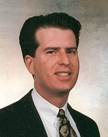Think positively, U-M expert says
Jobs in education, health care among the bright spots
June 22, 2007
BY JOHN GALLAGHER
FREE PRESS BUSINESS WRITER
Give yourself a break, Michigan.
A new report from the University of Michigan warns that the state's negative self-image may be doing more harm than its very real economic challenges.
Study author Thomas Ivacko said Thursday there's no question Michigan's signature automotive industry has suffered tremendously in recent years.
But ignoring signs of an emerging knowledge-based economy of the future is holding back the state's progress, he said.
His report, "Michigan's Economic Transition: Toward a Knowledge Economy," is being released today.
It can be found at http://www.closup.umich.edu.
Ivacko, a program manager at U-M's Center for Local, State, and Urban Policy, said parsing hope from despair is a fine line in Michigan.
"We can't say things are good. Clearly, things are pretty darn bad," he said. "But we can choose what to focus on, and there are plenty of good things happening."
As the report makes clear, there's no question Michigan's 20th-Century economic model is fading. The state's factory jobs shrank 27% between 1997 and 2006, while automotive parts manufacturing slid even more, down nearly 34% during that time.
But at the same time, jobs increased in health care, education, professional and technical services, scientific consulting and other fields.
Employment in colleges, universities and professional schools rose nearly 72% during the past 10 years.
Also positive, Michigan ranks as a top-10 state in several scientific and technical fields, including patents awarded, the percentage of engineers in the workforce and employment in high-tech enterprises.
"We have some real, honest, serious assets that would support a knowledge economy," Ivacko said. "If we choose not to focus on those, we're just holding ourselves back."
An unanswered question is how much of Michigan's emerging high-tech, entrepreneurial workforce is still tied to the automotive industry in some way, such as in engineering consulting firms.
Ivacko said he suspects that a lot of it is. But those firms might evolve into something else, either in other forms of transportation or alternative energy, as their automotive work fades.
"One key to the new economy is that firms and individuals simply have to become nimble," he said. "If you're doing one thing today, it doesn't necessarily mean you're going to be doing the same thing five years from now."
While the report supports policy prescriptions such as more money for education, Ivacko said the real message is directed at Michiganders' mind-set.
"I think the place that could really use focus is the culture, and that's up to us. We've got to change this rust belt mentality and this entitlement mentality to this more proactive, forward-focused vision."
He cited the example of musician Jack White of the White Stripes, who recently sold his home in Detroit and moved to Nashville, Tenn., because he said he couldn't take the negativity here any more.
"We're driving away some of our best talent by this negative focus," Ivacko said.
Jobs in education, health care among the bright spots
June 22, 2007
BY JOHN GALLAGHER
FREE PRESS BUSINESS WRITER
Give yourself a break, Michigan.
A new report from the University of Michigan warns that the state's negative self-image may be doing more harm than its very real economic challenges.
Study author Thomas Ivacko said Thursday there's no question Michigan's signature automotive industry has suffered tremendously in recent years.
But ignoring signs of an emerging knowledge-based economy of the future is holding back the state's progress, he said.
His report, "Michigan's Economic Transition: Toward a Knowledge Economy," is being released today.
It can be found at http://www.closup.umich.edu.
Ivacko, a program manager at U-M's Center for Local, State, and Urban Policy, said parsing hope from despair is a fine line in Michigan.
"We can't say things are good. Clearly, things are pretty darn bad," he said. "But we can choose what to focus on, and there are plenty of good things happening."
As the report makes clear, there's no question Michigan's 20th-Century economic model is fading. The state's factory jobs shrank 27% between 1997 and 2006, while automotive parts manufacturing slid even more, down nearly 34% during that time.
But at the same time, jobs increased in health care, education, professional and technical services, scientific consulting and other fields.
Employment in colleges, universities and professional schools rose nearly 72% during the past 10 years.
Also positive, Michigan ranks as a top-10 state in several scientific and technical fields, including patents awarded, the percentage of engineers in the workforce and employment in high-tech enterprises.
"We have some real, honest, serious assets that would support a knowledge economy," Ivacko said. "If we choose not to focus on those, we're just holding ourselves back."
An unanswered question is how much of Michigan's emerging high-tech, entrepreneurial workforce is still tied to the automotive industry in some way, such as in engineering consulting firms.
Ivacko said he suspects that a lot of it is. But those firms might evolve into something else, either in other forms of transportation or alternative energy, as their automotive work fades.
"One key to the new economy is that firms and individuals simply have to become nimble," he said. "If you're doing one thing today, it doesn't necessarily mean you're going to be doing the same thing five years from now."
While the report supports policy prescriptions such as more money for education, Ivacko said the real message is directed at Michiganders' mind-set.
"I think the place that could really use focus is the culture, and that's up to us. We've got to change this rust belt mentality and this entitlement mentality to this more proactive, forward-focused vision."
He cited the example of musician Jack White of the White Stripes, who recently sold his home in Detroit and moved to Nashville, Tenn., because he said he couldn't take the negativity here any more.
"We're driving away some of our best talent by this negative focus," Ivacko said.




